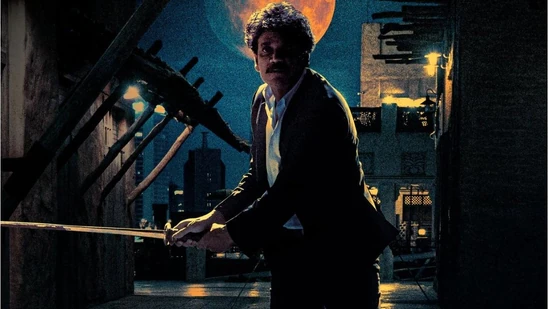Liger’s box office failure shows you can’t manufacture a pan-India hit
Liger and Radhe Shyam had stars who are popular in the North too. Both had wide releases with massive publicity and both crash landed spectacularly.

Vijay Deverakonda is a big star down south. His 2019 film Dear Comrade had an opening of ₹18 crore, a sizable number. Then, of course, Arjun Reddy earned over ₹50 crore on a ₹5-crore budget and spawned a Bollywood remake starring Shahid Kapoor. Courtesy that film and Kabir Singh (its remake), Vijay Deverakonda became a known name across India. Perhaps that familiarity is what the makers of Liger wanted to cash in on when they cast the actor. Liger, billed as Vijay’s Bollywood debut and a pan-India film, was released last week amid much hype. It crash-landed with equal grandeur, falling way short of expectations
The year 2022 has been humbling for Indian cinema. Bollywood biggies like Akshay Kumar and Aamir Khan have seen their films find no takers at the ticket window. Smaller films have failed to even get to ₹10 crore. There is a perception that films from the four south industries have fared better, which the successes of RRR, KGF: Chapter 2, and Vikram substantiate to an extent. But what hasn’t worked is when makers have tried to force a film to be ‘pan-India’. The term entered the cine glossary after SS Rajamouli turned the business model upside down with the seminal blockbuster Baahubali. The film’s success meant producers felt they could recreate it by either casting actors with supposed pan-India appeal or getting actors from multiple industries to cross over in an event film.
But Liger’s failure, and Radhe Shyam’s failure before it, proves that you cannot manufacture a pan-India hit in today’s climate. Many have tried and many have failed. The one common factor among all these failures is that all these films were critical failures as well. The audience first rejected the content and then rejected the pan-India tag. The hype may have earned them a solid opening in some cases but didn’t build a momentum because of the absence of substance.

But pan-India successes exist. At least three films have been pan-India blockbusters in the last 12 months. Pushpa’s success was an anomaly. Yes, Allu Arjun is a huge star but in the Telugu industry. His popularity in mainstream Hindi-speaking belt was limited till before last year. The film grew solely by word of mouth and ended up being 2021’s top grosser. KGF 2 was an even bigger surprise. The first part had made ₹250 crore, which was considered a mammoth achievement by trade analysts.
The sequel made five times as much. Till four years ago, no Kannada film had even made 10% of what this film made. Sample this, it’s Hindi-dubbed version alone made more money than any Hindi film ever made. The only draw it had was Yash. The two Bollywood names in the film–Sanjay Dutt and Raveena Tandon–are not box office draws, certainly not big enough to get ₹1250 crore. As for RRR, I would just say it’s the SS Rajamouli factor. Having given three back-to-back all-time blockbusters, it is safe to assume that maybe he has cracked the box office code, at least for now.
None of these films was trying or aiming to be a pan-India success in the conventional manner. Neither Yash, nor Ram Charan-Jr NTR, are household names in the north. The Bollywood presence in the films was nominal and in Pushpa’s case, absent. Yet, they succeeded. On the other hand, Radhe Shyam flopped. Despite the star power of Prabhas, a ₹350-crore budget, and a massive 10,000-screen release, it barely crossed ₹200 crore in earnings. Liger will earn even less but it is a smaller film.
So what are these films doing wrong? The answer is they are trying to follow a formula. Their makers are observing what is working and attempting to replicate it, looking at it from a marketing point of view, probably sacrificing the creative aspect for it. And if there is one thing the audience has told the film industry in the last few years, it’s that content is indeed the king. You give them entertainment and they will flock to the theatres.
And even then, it does not guarantee pan-India success. The best examples of this are Vikram and Vikrant Rona. The former, a Tamil film, was headlined by Kamal Haasan, one of the most popular men in the country. It broke records down south, raking in over ₹400 crore. The Hindi version earned only ₹8 crore. Similarly, Kannada film Vikrant Rona had Kiccha Sudeep’s star power and it earned ₹200 crore. But out of it, the Hindi version’s share was again only ₹8 crore. Both films were successes but not across India.

For a film to be a pan-India success, a lot of things need to go right. It has to be made well, have a subject and theme that has universal appeal. And then, it needs to resonate with people across cultures. Most of these things are so subjective and arbitrary, that they cannot be ‘replicated’ on trying. That is what the film industry needs to understand. Merely casting a south star with a Bollywood heroine or getting a Bollywood star to be a villain down south won’t cut it. The audience, simply speaking, is smarter than that. And filmmakers need to wake up to that fact.



